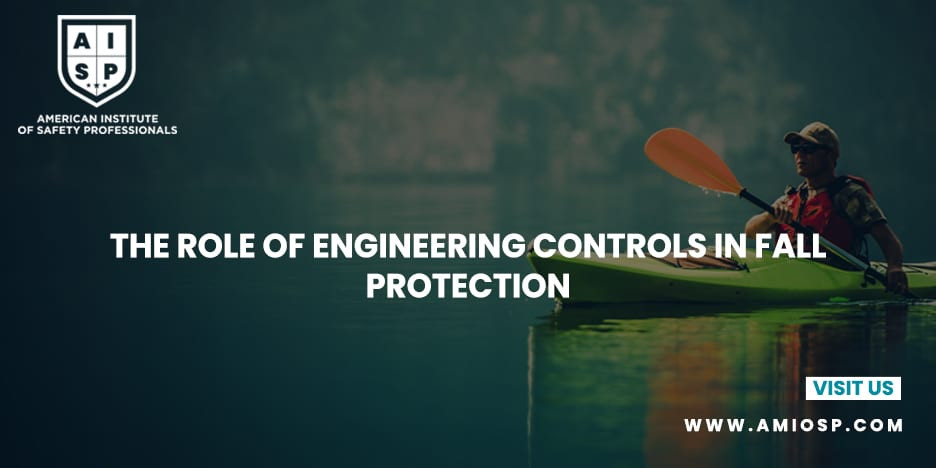When it comes to fall protection, engineering controls play
a critical role in preventing falls and protecting workers at height. While
personal protective equipment (PPE) like harnesses and lanyards are essential,
engineering controls offer an additional layer of protection by eliminating or
minimizing fall hazards altogether. In this blog post, we will explore the
significance of engineering controls in fall protection, discuss various
engineering control measures, and highlight their benefits in creating safer
work environments.
Understanding Engineering Controls
Engineering controls refer to the systematic approach of
designing and implementing physical changes to the work environment to mitigate
or eliminate fall hazards. Unlike administrative controls that rely on human
behavior and supervision, engineering controls focus on modifying the workplace
itself to create a safer environment. By incorporating engineering controls,
employers can reduce reliance on personal protective equipment and proactively
address fall hazards.
Types of Engineering Controls
There are several types of engineering controls that can be
implemented to enhance fall protection. These include:
1. Guardrails and Barriers: Guardrails are physical
barriers that are installed along the edges of elevated surfaces to prevent
falls. They typically consist of sturdy rails or panels, intermediate supports,
and toeboards. Guardrails provide a passive means of fall protection, as they
act as a barrier and prevent workers from inadvertently stepping or falling off
the edge.
2. Safety Nets: Safety nets are another type of
engineering control that can be used to arrest falls. They are typically
installed beneath elevated work areas to catch workers in the event of a fall.
Safety nets should be properly installed and regularly inspected to ensure they
meet industry standards and are capable of safely arresting falls.
3. Toeboards and Screens: Toeboards are installed
along the edges of elevated platforms or walkways to prevent tools, equipment,
or debris from falling off and posing a risk to workers below. Similarly,
screens are physical barriers installed around open-sided walkways or elevated
areas to prevent objects from falling or workers from accidentally stepping off
the edge.
4. Fall Arrest Systems: Fall arrest systems are
engineered devices that are designed to safely arrest a fall and minimize the
impact on the worker. These systems typically consist of anchor points,
lifelines, and full-body harnesses. Fall arrest systems are commonly used in
situations where other engineering controls are not feasible or as a secondary
measure to supplement existing controls.
Benefits of Engineering Controls
Implementing engineering controls in fall protection offers
several significant benefits, including:
1. Prevention of Falls: The primary objective of
engineering controls is to prevent falls from occurring in the first place. By
eliminating or minimizing fall hazards, workers are less likely to be exposed
to potential risks.
2. Proactive Approach: Engineering controls take a
proactive approach to fall protection by addressing hazards at their source.
This approach is more effective than relying solely on PPE or administrative
controls, as it reduces the reliance on worker behavior and ensures consistent
protection.
3. Ease of Use: Once engineering controls are
implemented, they require minimal effort or decision-making from workers.
Unlike PPE, which needs to be worn correctly and consistently, engineering controls
are always present and provide continuous protection.
4. Cost-Effectiveness: While engineering controls may
require an upfront investment, they can provide long-term cost savings. By
preventing falls and reducing the likelihood of injuries, employers can avoid
medical expenses, worker compensation claims, and potential legal liabilities.
5. Improved Productivity: When workers feel confident
in their safety, they can focus on their tasks without unnecessary distractions
or concerns about potential fall hazards. This leads to increased productivity
and overall job satisfaction.
Conclusion
Engineering controls play a crucial role in fall protection
by proactively addressing fall hazards and creating safer work environments. By
implementing measures such as guardrails, safety nets, toeboards, and fall
arrest systems, employers can significantly reduce the risk of falls and
protect their workers at height. The benefits of engineering controls,
including the prevention of falls, proactive approach, ease of use,
cost-effectiveness, and improved productivity, make them an integral part of a
comprehensive fall protection program. Prioritize engineering controls in your
workplace, and let's work together to ensure the safety and well-being of all
workers.












0 comments
No Comments